One of the world’s most significant “transfers of power” is about to occur by the end of this month!
Granted, that transfer of power is not at the level of the “head of state”[1] of a world power; however, I suggest that this particular transfer likely involves a level of power and international influence that transcends most other contemporary power transfers (with the obvious exception of a change within the office of “United States President”).
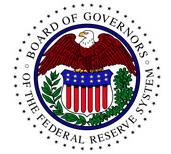 The January meeting of the Federal Reserve Open Market Committee (during the final week of the month) will be the final meeting that long-time Fed Chairman, Benjamin Bernanke, will attend. During the next four years, Dr. Janet Yellen will hold the reins of power at the Federal Reserve Bank – the very first woman to bear that immense responsibility.
The January meeting of the Federal Reserve Open Market Committee (during the final week of the month) will be the final meeting that long-time Fed Chairman, Benjamin Bernanke, will attend. During the next four years, Dr. Janet Yellen will hold the reins of power at the Federal Reserve Bank – the very first woman to bear that immense responsibility.
The rest of this article is intended as a resource for you (and any friends to whom you might forward the link to this article) regarding why this transition is an immensely important development, including the following:
I) The historical role of the United States in blazing the trail for “peaceful” transfers of power;
II) An opinion regarding how Dr. Yellen will now rank within an informal ranking of the most powerful women in United States’ history;
III) An egregiously condensed summary of the Federal Reserve Bank (it is now officially100 years old — as of last month[2]).
Hopefully, by the time you’ve completed this article, you’ll have a broader appreciation of the many pieces and permutations that go hand-in-hand with this transfer of power – a transfer that bears a monumental significance compared with the relatively scant attention to which most Americans pay it.[3]
I) The tradition of “Peaceful Transfer of Power”
a. Most of us take for granted the quadrennial Presidential Election Cycle;
b. When one political party loses to another, power is transferred peacefully during the January[4] following the election;
c. This transfer even took place (albeit with much tension and countless threats to the life of the President-Elect) in 1860, when Abraham Lincoln made it safely to Washington D.C. and was sworn in prior to the Civil War being launched.
d. Therefore, it is far too easy for us to forget the significance of the Election of 1800, when the challenger, Thomas Jefferson, defeated the incumbent, John Adams.
i. Jefferson and Adams may have been united in opposing King George and leading the colonies to independence from England; however, they had diametrically opposed positions regarding the proper role of a central government.
ii. Adams believed in a strong central government;
iii. Jefferson was a strong proponent of states’ rights and more latitude regarding individual freedoms.
e. If the less than savory elements in either party had been allowed to exert themselves, it is not hard to imagine that serious conflict could have ensued, making a “peaceful” transition impossible.
i. After all, the standard method for “power transfer” in Europe had (to that date) included one or more of the following: death, intrigue, assassination, or war.
f. If your instinct is to diminish the significance of that first, trail-blazing peaceful power transfer, then consider any of the following dynamics and transpose them into the setting of 1800:
i. The Watergate burglars and cover-up;
ii. The use of official U.S. agencies as a means of snooping upon opponents or wreaking punishment upon them;
iii. The use of wealth by persons or institutions to bribe officials or exert undue influence within the process.
g. Therefore, it is within this long historical tradition that control of the most powerful central bank in the world (by far) is being passed this month from Bernanke to Yellen!
II) The question of which woman has held the most power/influence within United States’ history is extraordinarily subjective. There is no way around that.[5]
a. Who might our potential “candidates” be for this distinction?
b. Consider this list:
i. Nancy Pelosi, first female Speaker of the U.S. House of Representatives, and second in line to succeed to the Presidency (if the President and Vice President die or become unable to fulfill the duties of that office).
ii. Hillary Rodham Clinton, former Secretary of State (fourth in line of succession; United States Senate Pro Tempore comes before Secretary of State).[6]
1. The Secretary of State is the highest post within the Cabinet.
iii. Sandra Day O’Connor (retired), Ruth Bader Ginsburg, Elena Kagan and Sonia Sotomayor have been the first four women named to the U.S. Supreme Court.
iv. Within an even more “subjective” realm of influence, two presidential spouses have enjoyed widespread influence (and even power):
1. Eleanor Roosevelt had great public visibility and a very active agenda of policies and interests she promoted during F.D.R.’s four terms of office.
2. Edith Wilson (second spouse of Woodrow Wilson) is widely acknowledged now to have exercised presidential powers during her husband’s long incapacity (lookup and read the historical account, which is fascinating).
v. And now, Dr. Janet Yellen.
c. No one can disregard Nancy Pelosi’s rise to power (from 2007 until after the 2010 election). However, a Speaker’s power is constrained by the opinions and actions of at least 434 politicians (who compose the membership of the House).
d. Similarly, it is difficult to overstate the influence wielded by our former female Secretaries of State. However, their influence is constrained by a massive bureaucracy and (more to the point) the foreign policy priorities of the President.
i. In addition, the Secretary is dependent (to some extent) upon annual funding from Congress.
e. Supreme Court Justices enjoy the impressive advantage of a “life term” (they cannot be replaced until the die or retire by choice). As with Federal Reserve Chair, each of them is appointed by the President. However, on the “limitation” side, none of them are (as of yet) “Chief Justice” of the Court – which is a position much more comparable to the Fed Chair in terms of the expansiveness of the office’s influence.
i. Even the Chief Justice depends upon funding from Congress in order to fulfill the full range of responsibilities the Chief Justice wields within the U.S. Judicial System.
f. Neither Eleanor nor Edith was ever “elected” to office. Although they each demonstrated substantial (and impressive) influence, that power and influence was clearly built upon and based on the constitutional authority of their husband.
g. In sharp contrast to all of the above, Dr. Yellen will wield an amazingly broad range of powers (during the next four years) over a system that was (for better or worse) intentionally created to be “independent” of the executive and legislative branches of the U.S. government. (IMAGE BELOW: the picture is of the current Federal Reserve Bank building in Washington, D.C.)
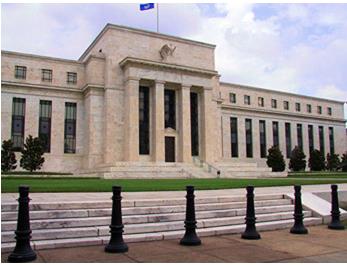 i. Granted, the Federal Reserve Act of 1913 that created the central bank was an official action of the U.S. Congress, and (at least in theory) Congress can always legislate changes within the powers and prerogatives of the Fed;
i. Granted, the Federal Reserve Act of 1913 that created the central bank was an official action of the U.S. Congress, and (at least in theory) Congress can always legislate changes within the powers and prerogatives of the Fed;
1. However, the original act ensured Federal Reserve independence through the following:
A. The Fed has been given its own (very adequate) base of funding.
B. It never needs to seek funds from Congress.
C. The 4-year term of the Fed Chair always expires in between Presidential Election years, so a new president must wait for two years (officially, at least) before a change can be made.
2. In addition, with the national and international visibility of the U.S. Federal Reserve, it would be extraordinarily difficult for Congress to successfully legislate major changes within the operation of the central bank![7]
ii. The Federal Reserve Chair leads the central bank’s responsibilities with regard to U.S. financial regulation.
1. This became most obvious during the 2007-09 Financial Crisis, with Treasury Secretary Henry Paulsen and the Fed’s Ben Bernanke engaging in regular (sometimes daily) strategy/crisis meetings.
2. It also manifests itself with regard to such issues as “Dodd Frank” regulations, “too big to fail”, bank capital risk management, various international bank accords (such as the various “Basel” agreements) etc.
iii. Of course, the most consequential of the powers wielded by Yellen is her leadership of the Federal Open Market Committee (FOMC) – the very group whose meetings capture the very full attention of Wall Street and traders on a monthly basis!
1. The FOMC determines U.S. Monetary Policy, which most recently has involved long periods of extreme monetary easing (QE I, QE II, QE III).
2. As the FOMC floods the U.S. financial system with funds, those funds inevitably find their way into various financial instruments – be they equities, fixed income, commodities, real estate, etc.
3. In the next section, you’ll see graphs and read statistics that will demonstrate the mind-blowing magnitude of the Federal Reserve’s monetary policy powers!
III) A condensed History of the Federal Reserve
a. During the 19th Century, there were at least the following financial crises within the U.S.:
i. Panic of 1819 (culmination of the first “boom to bust” cycle in the U.S.);
ii. Panic of 1837 (recession with bank failures; then a 5-year depression);
iii. Panic of 1857 (recession with bank failures);
iv. “Long Depression” 1873-96
1. Panic of 1873 (recession with bank failures; four-year depression);
2. Panic of 1884 (confined mainly New York, but pre-figured later crises);
3. Panic of 1893 (recession with bank failures)
v. By 1895, the financial system became vulnerable to an impending shortage of Gold Reserves within the U.S. Treasury… a crisis reputed to have been aggravated by bank magnate, John Pierpont Morgan, so he could engineer a rescue package that would net him and his partners a huge profit.
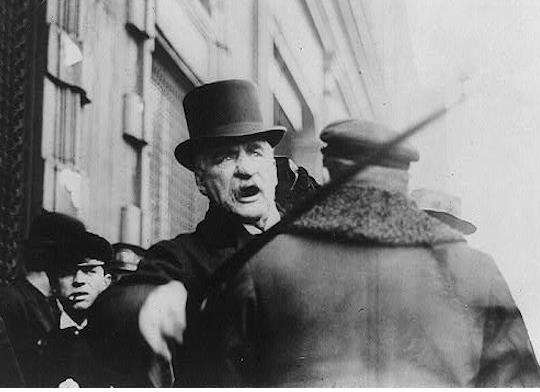 IMAGE to the left: this is an unflattering, but quite true to life, image of the mighty 19th U.S. financial giant – John Pierpont Morgan (Source: Library of Congress
IMAGE to the left: this is an unflattering, but quite true to life, image of the mighty 19th U.S. financial giant – John Pierpont Morgan (Source: Library of Congress
b. As the 20th century began, the United States soon faced a new banking/financial crisis! In 1907, major New York banks were in danger of failure, which would have thrown the financial system into a severe crisis.
i. To no one’s surprise, J.P. Morgan once again engineered a rescue package.
1. In return, he made millions.
2. In addition, he exacted a promise from President Theodore Roosevelt that a pending big steel merger would be approved, despite substantial concerns about monopolistic repercussions![8]
ii. Even the politicians could recognize (by this point) that a chronic financial boom/bust/failure cycle could no longer be tolerated.
1. They felt a public “lender of last resort” needed to be created[9]
2. A lender independent of politics[10]
c. Thus, by 1913, the Federal Reserve Act was passed, and the Fed was given birth in December of that year (hence its 100th birthday!).
IMAGE BELOW: The picture below depicts the official signing of the Federal Reserve Act of 1913. The most recognizable face is that of President Wilson, the gentleman sitting in the foreground, wearing a lighter colored suit.
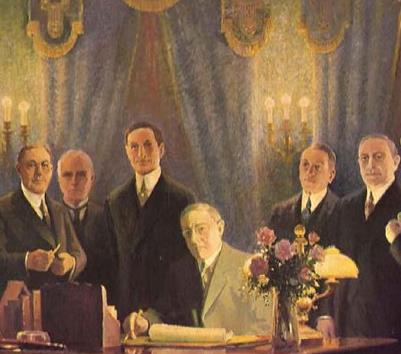 d. The two most obvious original goals of the Fed included:
d. The two most obvious original goals of the Fed included:
i. Reassure bank customers that their deposits were safe because the Fed stood ready to backup regional and local banks (thereby diminishing or eliminating “bank runs”).
ii. Smooth out volatile interest rate cycles through a standard principle from “Econ 101”:
1. When loan demand was high, the Fed increased its loans to member banks;
2. When loan demand was low, the Fed cut back on their lending level.
3. This was intended to stabilize the supply/demand curve.
iii. These activities were also intended to smooth out and stabilize movements within the aggregate “price” levels of the U.S. economy (ie. movements along the spectrum between inflation and deflation).
e. These strategies/activities proved relatively successful from 1913 until the advent of the Stock Market Crash (1929).
i. The problem was that, from 1929 onward, loan demand became weaker and weaker, so the Federal Reserve allowed its lending levels to system banks remain steady or decline.
ii. Fed members did not recognize that 1929 was a systemic “earthquake” rather than merely a (normal) slowing of demand.[11]
iii. Therefore, the Fed’s “normal strategy” proved to be precisely the wrong course to follow!
1. The Money Supply plummeted, transforming a recession into a depression!
2. (Later) Ben Bernanke’s prime topic of academic research was this very era in U.S. financial history – the Depression Era
3. Therefore, better than anyone else within the U.S., he knew what not to do when the Market crashed in 2008 and the markets were in danger of freezing up!
4. Hence Quantitative Easing was an obvious policy alternative – given his understanding of how the economy failed under the Fed during the 1930’s.
iv. The blunt truth is that the economic hyper-activity required during World War II lifted the U.S. out of the Great Depression.
v. Much humbled and newly aware of the vicissitudes of monetary policy, the Fed handled the normal “ups and downs” of the U.S. economy from the mid 40’s through the 1950’s – helping smooth out the country’s economic cycles.
vi. Unfortunately, through the 1960’s-70’s, the Fed faced new challenges, which eventually led the Fed Governors to interpret certain economic data points as indicating an economic weakness to which the Fed needed to respond proactively.
1. The Fed’s actions were too aggressive, and led the economy into a period of “Stagflation” (late 70’s, early 80’s).
2. Like a medical disease for which the “cure” is unappealing, the “cure” for this condition was a steep jacking up of interest rates,[12] triggering a recession (1981-82) and eventually transforming into steady growth and a “recovery” of the magnitude for which we have all been hoping during the past few years (but been bitterly disappointed in its stark absence).
3. Paul Volcker was the mastermind of the Fed in those days, and his success in pulling the U.S. out of its doldrums resulted in Volcker being elevated within financial circles) to the status of a demigod.
4. It was Volcker’s Fed and President Ronald Reagan’s economic plan that initiated the prolonged “Bull Market” in stocks that is dated from 1982.
vii. Alan Greenspan followed as Fed Chair after Volcker departed.
1. Despite great “gnashing of teeth” and semi-melodramatic bouts of anxiety about how Greenspan could possibly be as competent as Volcker, Greenspan seemed to “push the right buttons” when crises arose:
A. 1987 Stock Market Crash: the Fed provided a huge infusion of liquidity into the system to ease anxiety and prevent failures.
B. “Dot.com Bubble” and the “9/11 Attack” on the Twin Towers and the Pentagon: once again, the Fed provided an injection of liquidity, reassuring the markets at every turn needed.
2. However, Greenspan was no demigod, and certainly notomniscient.
A. At one point, he chastised the financial markets (on December 5, 1996) during a speech in which he said the following: “But how do we know when irrational exuberance has unduly escalated asset values, which then become subject to unexpected and prolonged contractions as they have in Japan over the past decade?”[13]
B. The irony of the theme Greenspan broached in that speech (and proved to be one of his most memorable quotes ever) is that he and his fellow Fed Governors failed to recognize the risks posed between 2003 and 2007 by huge amounts of capital coming into the U.S. from China and other overseas sources, as well as the massive boom in the housing market and mortgage financing – especially the unprecedented liberalization of loan underwriting standards!
C. Fairly or unfairly, Greenspan’s legacy has included receiving a great deal of the “blame” for the Financial Crisis and the Great Recession.
i. The Fed failed to put some “brakes” on the overheating housing market, as well as the overleveraging of personal and corporate balance sheets.
ii. It is my personal opinion that President William Clinton and Barney Frank (the most powerful voice on banking/finance within the U.S. House, and the strongest proponent of the broadening of home ownership and liberalization of mortgage lending!) were much more to “blame” than Greenspan; but no one can “excuse” the Fed for missing the signs that led to where we are today economically.
iii. It is possible that Mr. Greenspan succumbed to the temptation of “believing” his press clippings.
1. The financial world came to “revere” Greenspan’s Fed leadership, despite the fact that his Congressional testimony and speech content was often so inscrutable that it required some sort of “translation”.
2. Becoming thought of as the “Yoda” of the U.S. financial system might have led Greenspan to think too highly of his own analysis.
viii. Benjamin Bernanke followed Greenspan as Fed Chair.
1. You already know that Bernanke was a devoted student of (and expert on) the Great Depression.
2. In retrospect, one might surmise that Bernanke decided, early on, that if he was going to make any mistake, it would not be the mistake of providing too little liquidity!!
3. Graphically demonstrating that Bernanke was true to his (presumed) initial resolution are graphs of the U.S. Federal Reserve “Balance Sheet” (B/S)… essentially, a picture of the extent to which it has injected “funds” into the U.S. financial system.
A. The first graph comes from the Federal Reserve itself:[14]
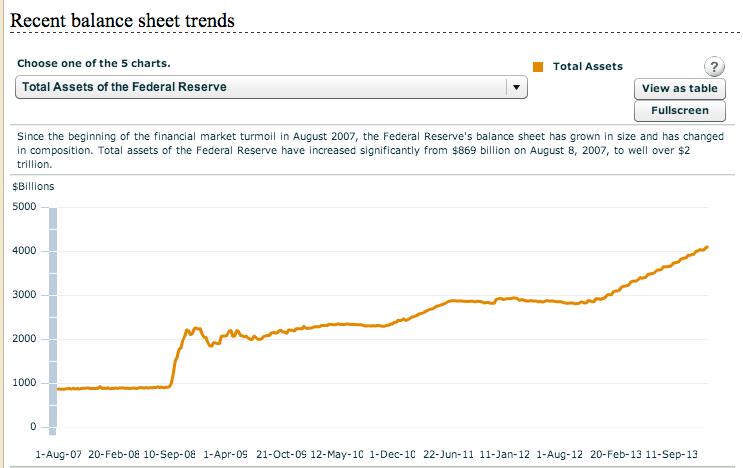 Note that in September of 2008, the B/S stood at $1 trillion. Since then, the Fed has added three times that much… to over $4 trillion.
Note that in September of 2008, the B/S stood at $1 trillion. Since then, the Fed has added three times that much… to over $4 trillion.
You might be thinking: “Well of course, Tom. The U.S. Government is massive. Everything about it is impossible to adequately envision. This doesn’t surprise me!”
If that is what you are thinking, I understand and empathize. So consider the following statistics, which certainly helped me to place the Fed’s B/S activities into a much clearer perspective:[15]
a) $4 trillion is the equivalent of almost one-quarter of the entire U.S. Gross Domestic Product (GDP).
b) $4 trillion is greater than the GDP of Germany, the world’s fourth largest economy.
c) $4 trillion is double the size of the total U.S. debt owed on automobiles and student loans.
d) $4 trillion is even larger than the total amount spent annually by the Federal government.
One of the consequences of all this monetary activity by the Federal Reserve during these recent years is that it has surpassed all other holders of U.S. debt. No longer are either China or Japan the biggest holder of U.S. Treasury debt! Currently, the Federal Reserve itself owns about $2.2 trillion of U.S. Treasury Securities – about $900 billion more than China owns.
Taking that image one step further: if one combines all the U.S. Treasury debt owned by China and most of the members of the Eurozone, that aggregate amount is lower than the total owned by the U.S. Federal Reserve.
Here is one additional comparative statistic: In 2008, the Fed controlled under $500 billion of Treasury Securities; now it controls $2.2 trillion. That amounts to an increase of over 350%!
Does that list of statistics help you gain a better grasp of “magnitude” with regard to the activities of the Federal Reserve?
Finally, take a good look at the following image — a telling graph depicting an additional dynamic at work within the Fed’s recent monetary hyperactivity. This graph cross-references the Fed Balance Sheet with the Quantity of Words needed within each Federal Reserve Statement!
Notice the strong correlation between the upward slope of the B/S and the upward slope of the number of words the Fed thought was necessary to explain the steadily rising total of assets held by the Fed![16]
So, friends, here is your “Pop Quiz” on this subject matter:
1) Which country was the first to demonstrate a systemic way to peacefully “transfer power” within a nation-state?
2) In which year was such a transfer first successfully carried out?[17]
3) Name at least three of the women who are reasonable “candidates” to be thought of as the “most powerful U.S. female ever.”
4) Who is taking over leadership of the U.S. Federal Reserve Bank (officially) this month?
5) During the most recent two-year period, what single factor has played the greatest role in driving the value of U.S. equities higher?
6) Whose choice of the word “Taper” during Congressional testimony in May of 2013 set off a firestorm of negative reaction within the U.S. stock and bond markets – and an even more pronounced negative reaction within the markets of most emerging markets?
7) The current assets (Balance Sheet) held by the Fed currently stands at about $4 trillion. Which major world economic power has an annual GDP just under the size of that Fed B/S?
8) From the end of this Fed meeting onward, what person will become the single most powerful person within the world regarding monetary policy and general financial affairs?
Bonus Questions: Prior to 1913, what U.S. financial figure frequently usurped the role of “lender of last resort” now cared for by the Federal Reserve?
What were the true motives that prompted that figure to “save” the financial system each time he did so?
What institution still bears that figure’s identity within its corporate history and official name?
[See answers below]
Given all of the above, can there be any doubt that (thus far within our nation’s history) the most powerful and influential woman within U.S. history is Dr. Janet Yellen?[18] (Her head is featured below).
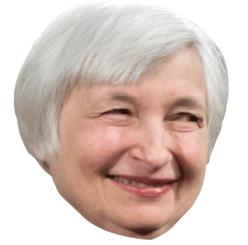 DISCLOSURE: No stocks have been mentioned. However, I do need to disclose that I have owned, do own, and surely will continue to own U.S. Treasury Securities! In addition, like millions of others, my equity portfolio has grown as a direct result of the expansive monetary policy of Mr. Bernanke. Nothing in this article is intended as a recommendation to buy or sell anything. Always consult with your financial advisor regarding changes in your portfolio – either subtractions or additions.
DISCLOSURE: No stocks have been mentioned. However, I do need to disclose that I have owned, do own, and surely will continue to own U.S. Treasury Securities! In addition, like millions of others, my equity portfolio has grown as a direct result of the expansive monetary policy of Mr. Bernanke. Nothing in this article is intended as a recommendation to buy or sell anything. Always consult with your financial advisor regarding changes in your portfolio – either subtractions or additions.
QUIZ ANSWERS:
1) United States
2) 1800
3) Nancy Pelosi (former House Speaker), Hilary Rodham Clinton (former Secretary), Condoleeza Rice (former Secretary), Madeleine Albright (former Secretary), Sandra Day O’Connor (retired Justice), Justice Ruth Bader Ginsburg, Justice Elena Kagan, Justice Sonia Sotomayor, Eleanor Roosevelt (deceased), Edith Wilson (deceased).
4) Dr. Janet Yellen
5) The Quantitative Easy policy of the Federal Reserve
6) Chairman Ben Bernanke
7) Germany (4th largest GDP in the world)
8) Dr. Janet Yellen
Bonus 1: John Pierpont Morgan
Bonus 2: Power and money
Bonus 3: J.P. Morgan Chase Bank[19]
[1] Variously titled “president”, “prime minister”, “premier”, “chairman”, “king”, “queen”, etc. depending upon a nation’s polity.
[2] Did you miss the Birthday Party??
[3] No nationally televised swearing in (like the “Inauguration”); no big celebration involving all the key players; etc.
[4] Until the Twentieth Amendment, that transfer took place on March 4th, the date the U.S. Constitution first took effect! The final Inauguration that occurred in March came in 1933!
[5] This will be true until a woman is elected as U.S. President for the first time.
[6] As we know, two other women held this post before Ms. Clinton did: Condoleeza Rice and Madeleine Albright
[7] Congress is barely able to fulfill some of its most fundamental responsibilities (such as creating and approving an annual budget), much less agree on comprehensive changes to the Federal Reserve!
[8] Morgan owned U.S. Steel and was buying another steel company.
[9] This would be In sharp contrast to the greedy and manipulative J.P. Morgan.
[10] This was an extremely naïve notion, to be sure; however, it was (nonetheless) the principle toward which they strived.
[11] Today, we’d likely characterize the Crash as a “Black Swan” event.
[12] I vividly remember Money Market Rates reaching at least the 18% APR level!! That is what I call a “savings rate”!!
[13] “The Challenge of Central Banking in a Democratic Society”
[14] http://www.federalreserve.gov/monetarypolicy/bst_recenttrends.htm
[15] Most of these statistics have come from Bloomberg News. They were entered into the official record of the U.S. Senate recently.
[16] See: http://in.finance.yahoo.com/news/one-chart-shows-big-disaster-172412906.html
[17] The transfer of power from George Washington to John Adams was not a “transfer” in the traditional sense because these two men belonged to the same political party.
[18] You are quite welcome to disagree with me, but by now you should have a very clear understanding why I think she is! Therefore, this transition of power within the Federal Reserve is a much “bigger deal” than the average U.S. citizen realizes!
[19] Is it mere coincidence that “Jamie” (the name of the current Chase CEO) rhymes with “J.P.”?
Related Posts
Also on Market Tamer…
Follow Us on Facebook

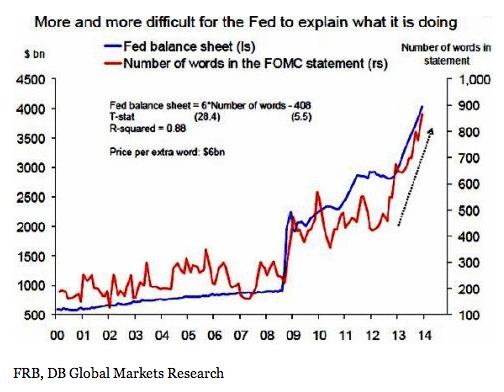
 Should You Buy Tractor Supply Stock Right Now?
Should You Buy Tractor Supply Stock Right Now?
